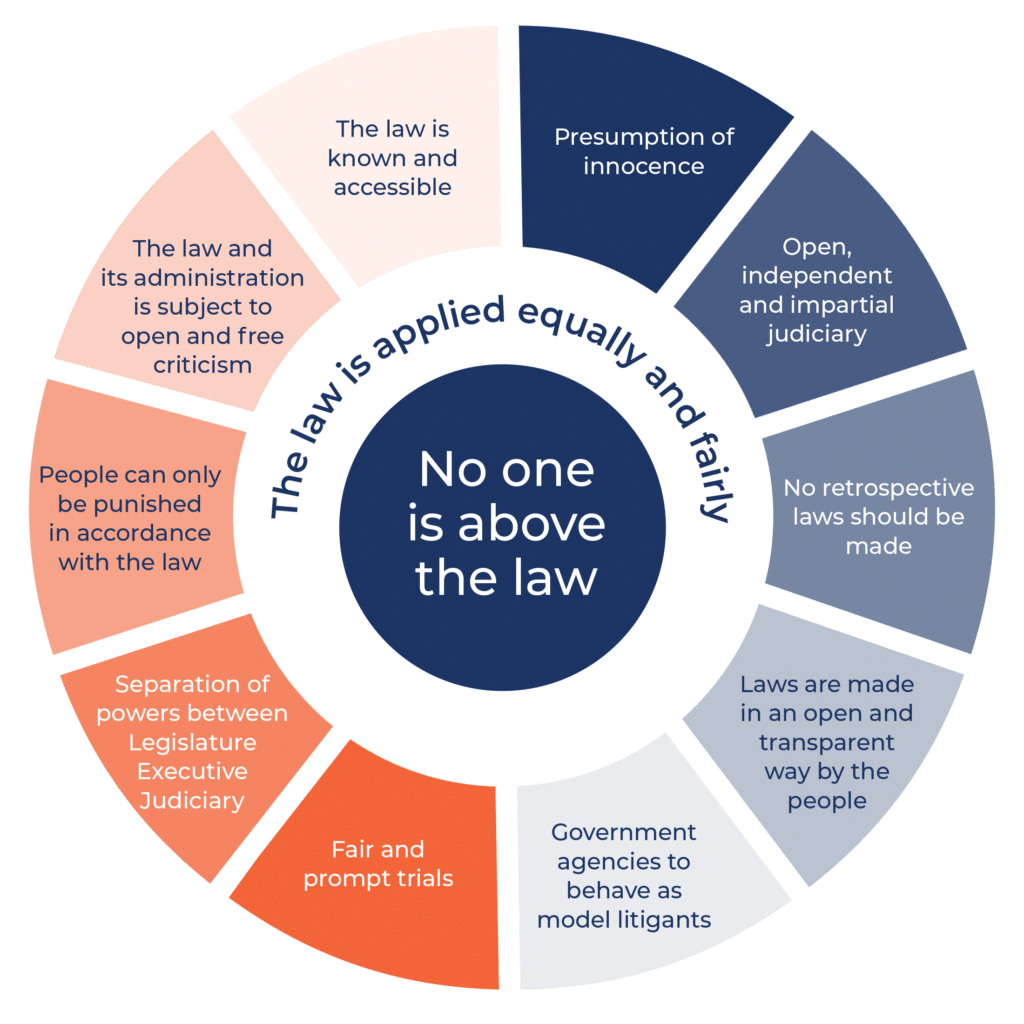This post explains the function of the new offence in the Crimes Act 1900 (NSW) – Assault causing death – for students in NSW studying law reform issues.
We also suggest looking at our post explaining the rule of law objections to mandatory sentencing which links to the themes and challenges from the NSW Legal Studies Syllabus.
- History of the Offence
- What is the Offence?
- Proving the Elements of the Offence
- What does intoxication mean?
- Final comment
History of the Offence
This new offence was passed to provide an offence which would allow for those convicted of the so-called “one punch” assaults while under the influence of drugs or alcohol to receive a mandatory minimum sentence of 8 years imprisonment. This was in response to a number of deaths in the Kings Cross area of Sydney where the young men killed were tragically assaulted and died later in hospital as a result of their injuries.
The Crimes and Other Legislation Amendment (Assault and Intoxication) Act 2014 (NSW) was passed on 31/02/2014 which amends the Crimes Act 1900 (NSW) to include the new offence.
New Offence: Assault Causing Death
The new offence can be found in s25A and 25B of the Crimes Act 1900 (NSW). The Law Enforcement (Powers and Responsibilities) Act 2002 (NSW) and the Crimes (Sentencing Procedure) Act 1999 (NSW) have also been amended to provide for alcohol and drug testing in relation to the offence, as well as the removal of intoxication as a [pl_popover title=”What is a mitigating factor?” content=”A mitigating factor is a circumstance in a particular case which would cause the judge to consider a lighter sentence. This could entail giving an offender a lighter sentence because they did not understand the full consequences of their actions, but were capable of understanding that what they were doing was wrong.”]mitigating factor[/pl_popover] in sentencing for this offence.
What is the offence?
s25A(1)(a)-(c) Crimes Act 1900 (NSW):
“(1) A person is guilty of an offence under this subsection if:
(a) the person assaults another person by intentionally hitting the other person with any part of the person’s body or with an object held by the person, and
(b) the assault is not authorised or excused by law, and
(c) the assault causes the death of the other person.”
A person who is found guilty of the offence is subject to a maximum sentence of 20 years imprisonment.
A person who is over 18, intoxicated, and is found guilty of the offence is subject to a maximum sentence of 25 years, and a minimum mandatory sentence of 8 years imprisonment.
Proving the elements of the offence
The prosecution must establish three elements to prove this offence:
1. The accused must have intended to hit the victim (intent to hit)
Intent to hit is all that is required for this element of the offence, not intent to kill or injure. It is much easier to establish intent to hit than it is to show intent to kill or injure.
For example: it would be very hard to argue that a person who punches someone in the face with a closed fist did not intend to hit them. Identify which of the following situations shows INTENT to hit, and which do not:
- punching another person in the face;
- being pushed from behind by another person into someone else;
- slapping a person across the face;
- tackling a person to the ground;
- tripping on a shoelace and headbutting another person.
- tripping while carrying a heavy object and hitting someone with it.
This element of the offence is what makes it different to murder an manslaughter, since the [pl_popover title=”What is mens rea” content=”Latin term for the ‘guilty mind’. Evidence of the guilty mind in homicide looks at what the person intended to do. A clear example of intent to kill in a murder case would be if there was evidence the accused had said they intended to kill the victim immediately before doing so.”]mens rea[/pl_popover] of the offence only requires intent to hit, not recklessness or intent to kill, which are more difficult to prove. Courts have found it difficult to convict an intoxicated accused with murder for this reason.
2. That the accused must actually hit the other person with their own body, or an object (the guilty act)
What does hitting mean?
Hitting the other person with their own body or with an object held by the person is considered hitting.
How do you prove hitting?
In a public place this is likely to be very easy to establish for the prosecution to prove. Think about the following questions:
- Did a witness see the hit occur?
- Are there injuries on the victim which shows they were hit?
- Is there forensic evidence on the accused which suggests they hit the victim?
- Was there CCTV footage of the hit?
3. Causation: That the hit was responsible for the death of the victim.
Causation, which is the link between the hit and the death can be established by medical evidence, a finding by a court or the NSW Coroner.
What does intoxication mean?
An intoxicating substance is defined in s4 of the Crimes Act 1900 (NSW) as including alcohol or a narcotic drug or any other substance that affects a person’s senses or understanding.
To receive the mandatory minimum sentence for this offence, the accused must be found to have been intoxicated when hitting the victim. If intoxicated with alcohol this means a breath or blood alcohol concentration of 0.15 (0.05 is the legal limit for driving a vehicle under the influence in NSW, 0.15 is above the amount for a high range drink driving offence). There is no guidance provided as to what constitutes intoxication in terms of drugs and other substances.
Defences Against the Offence
This offence is concerned with “self-induced intoxication” which is being intoxicated as a result of taking drugs or consuming alcohol voluntarily . It is a defence to this aspect of the charge if a person has become intoxicated involuntarily.
There is also a defence for someone who can prove they were cognitively impaired which includes someone with an intellectual disability, a developmental disorder (including an autism spectrum disorder), a neurological disorder, dementia, a mental illness or brain injury.
Final Comment
This law reform creates the new offence of Assault Causing Death. The offence provides a mandatory sentence of 8 years for someone who is intoxicated and found guilty. The first element of the offence, proving intention to hit is a comparatively low standard of proof compared to manslaughter considering the severity of the mandatory sentence AND the potential maximum sentence of 20 years.
You may find the following arguments illustrative of the law’s shortcomings:
- this offence is essentially the same as manslaughter but effectively makes the mens rea of the offence so easy to prove it becomes a triviality
- the offence is like a [pl_popover title=”What is strict liability?” content=”A strict liability offence only requires the guilty act be proven to establish guilt. For example, in the case of receiving a speeding ticket, it is not relevant that you did not intend to speed or that it was accidental – evidence from a speed camera that you were speeding is enough to issue a penalty.”]strict liability[/pl_popover] offence because it is so easy to prove intent to hit, the offence rests more on establishing that one person hit the other (guilty act), and that the hit led to death (causation).
- when sentencing an offender convicted of the offence the judge may not take into consideration intoxication as a mitigating circumstance. This is exceedingly harsh considering the requirement of a mandatory sentence based on the offender being intoxicated.
~Nick
 Nick Clark is RoLIA’s Education Coordinator. Join the discussion about rule of law issues with Nick on Twitter @NClarq.
Nick Clark is RoLIA’s Education Coordinator. Join the discussion about rule of law issues with Nick on Twitter @NClarq.





